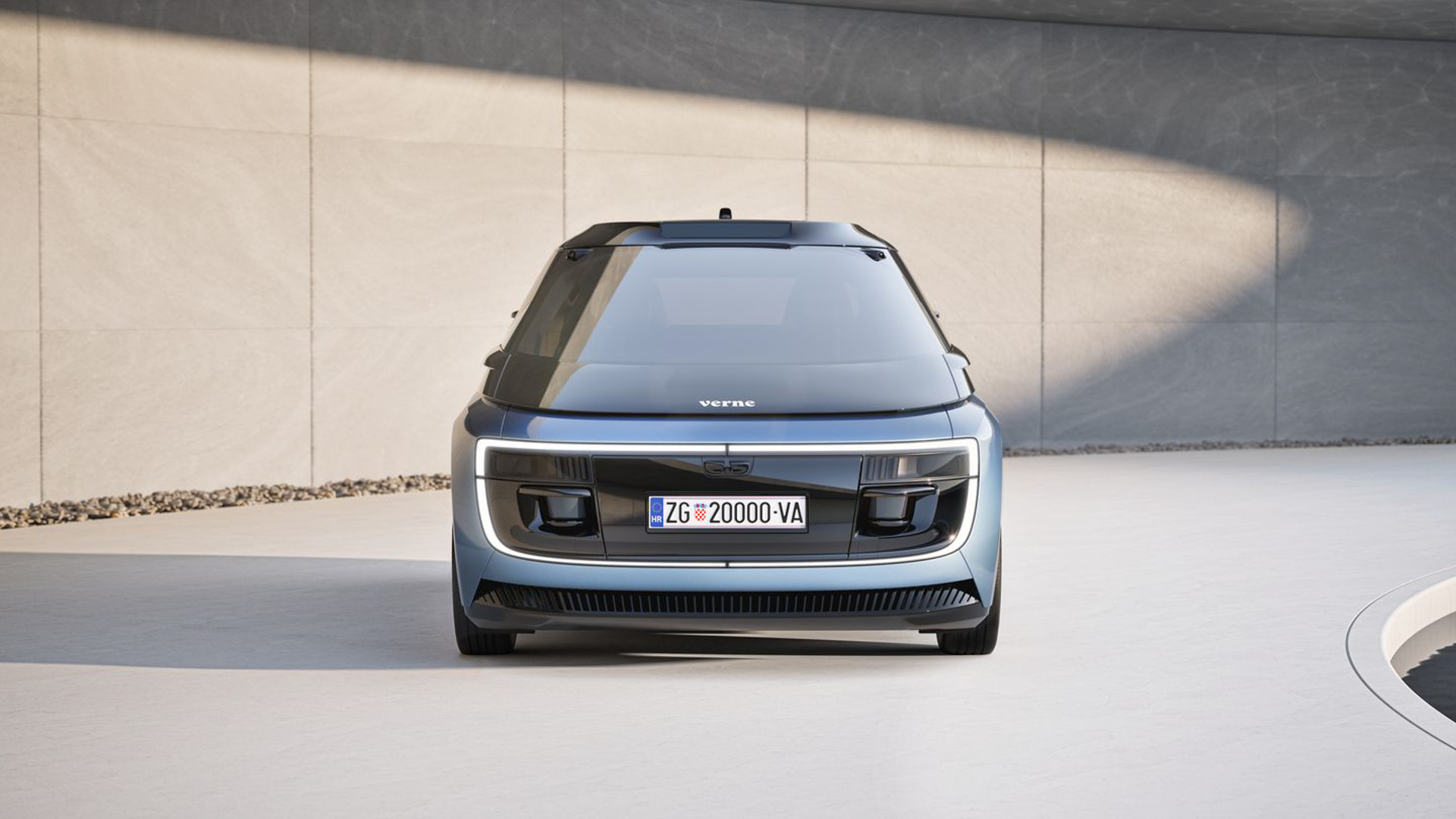

Mate Rimac is one of the automotive industry’s most noteworthy names, whether the average person has heard of him or not. After creating his namesake electric hypercar company and smashing performance records, he then became the CEO of Bugatti. In his new role, he’s launching Bugatti’s third-ever car under the Volkswagen umbrella: the stunning Tourbillon. Now, though, another Rimac company just launched a very different car concept, one with much less power and absolutely zero driver engagement.
Named after French sci-fi novelist Jules Verne, the Verne Robotaxi startup is owned by Mate Rimac and two of his Rimac Group associates, Marko Pejković and Adriano Mudri. The latter designed the Rimac Nevera and, naturally, is now Verne’s Chief Designer. This project isn’t as thrilling as the Rimac Nevera or Bugatti Tourbillon, but if it can deliver on its promises, it could be Mate Rimac’s most important yet.



The Verne Robotaxi looks like a futuristic French hatchback with two forward-sliding doors and no steering wheel or pedals. It packs a massive 43-inch touchscreen display, and on either side of the car, Lidar sensors protrude from the C-pillars and use MobileEye technology to help the car drive entirely on its own. Unlike most other robotaxi concepts, Verne’s does offer passengers some degree of control, with a center console touchpad that can change car settings and a “Median” that lets passengers start and stop the ride whenever they want. Speaking of passengers, there’s currently only seating for two, as Verne’s data shows that the vast majority of ride-hailing trips only have one or two occupants.
Customers will summon their Verne Robotaxi using its own app service and can change the car’s settings before it even arrives. They’ll be able to set temperatures, music, and even cabin scent through the app, so it’s perfectly set up for them when they get in. And since all Robotaxis will be cloud-connected, their backend data collection should help improve their capabilities and passenger experiences. According to Verne and Rimac, the first Robotaxis will be built in Croatia and start running in 2026, using Zagreb, Croatia as their initial testbed. Eleven cities are said to follow. All Robotaxis will use “Mothership” home bases to charge, receive repairs, and be cleaned when needed.



While this all seems interesting, and it’s more of a real concept than Tesla’s robotaxi with seemingly legitimate intent, it isn’t without controversy. To fund Verne and its Robotaxi, Rimac received $213 million from the European Union, which was taken from the $6.7 billion designation for a Croatian recovery plan. Private companies getting government money for manufacturing isn’t anything new in the U.S.; however, it isn’t as well-received in Croatia, where a member of the country’s parliament called Mate Rimac the “Balkan Elizabeth Holmes.” Yikes.
Thankfully, it seems like Rimac is actually developing a Robotaxi with the money; he isn’t just tweeting about it. As we’ve seen with Waymo and Cruise, robotaxis are useful in very specific instances but far from ready for widespread public service. If Rimac can hit his 2026 deadline while building and operating in Croatia, it might be worth the public investment. If not, his currently impressive reputation might take a hometown hit.
Got tips? Send ’em to tips@thedrive.com